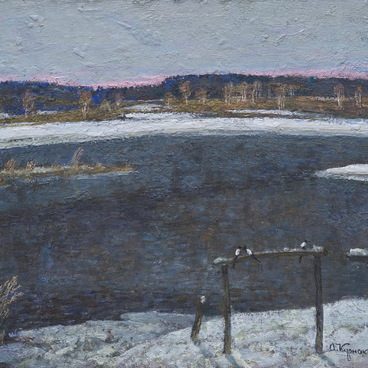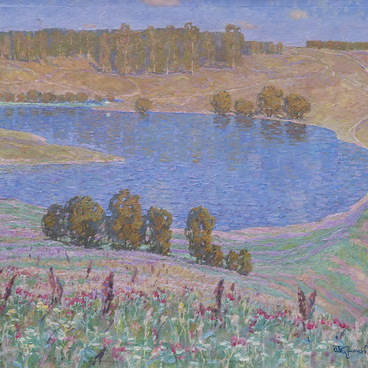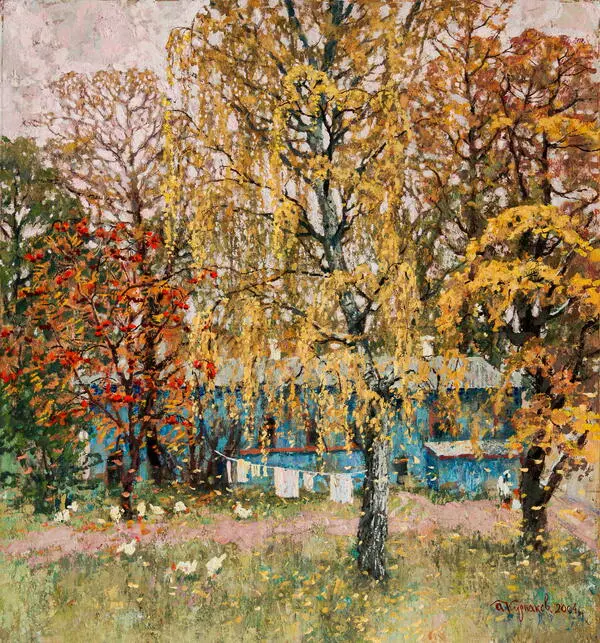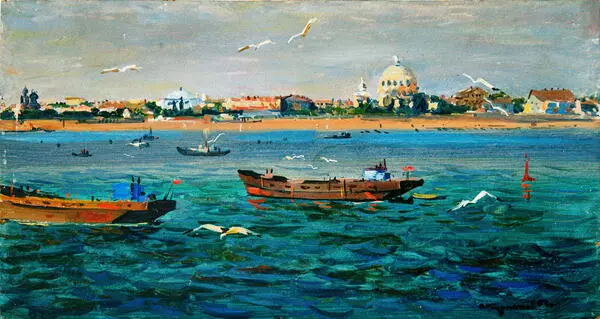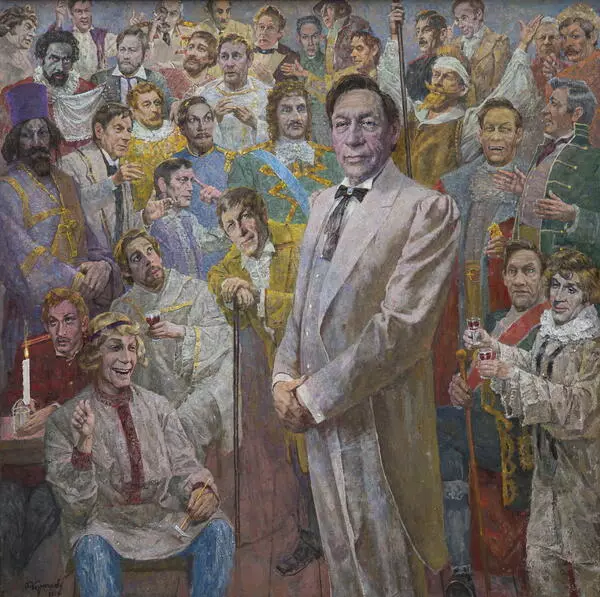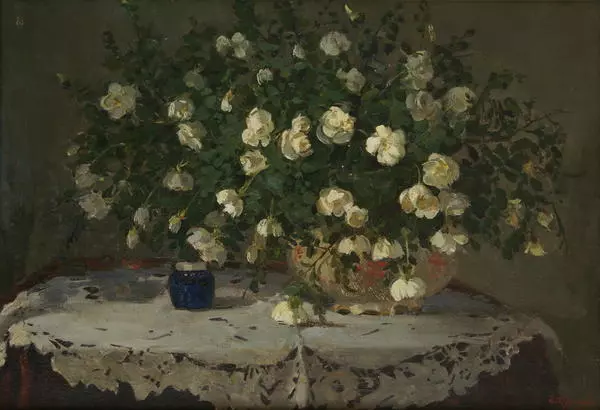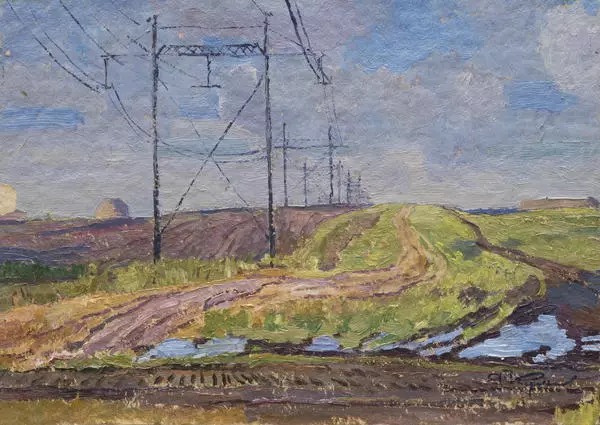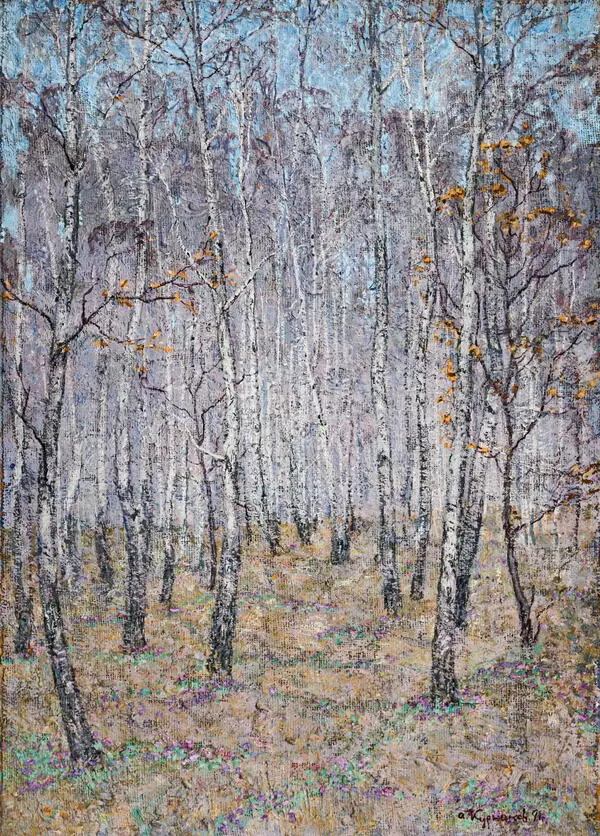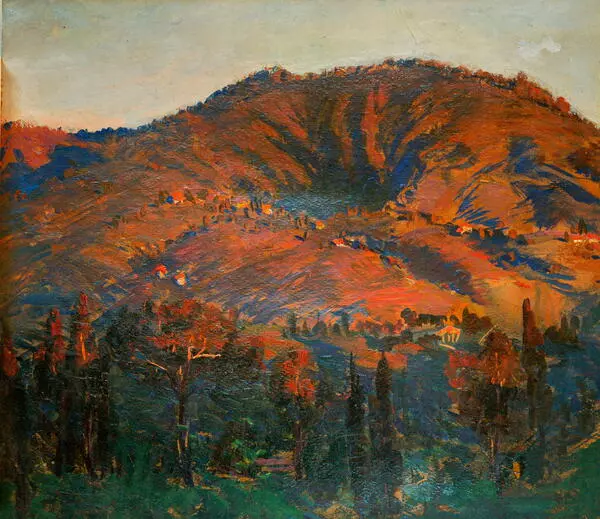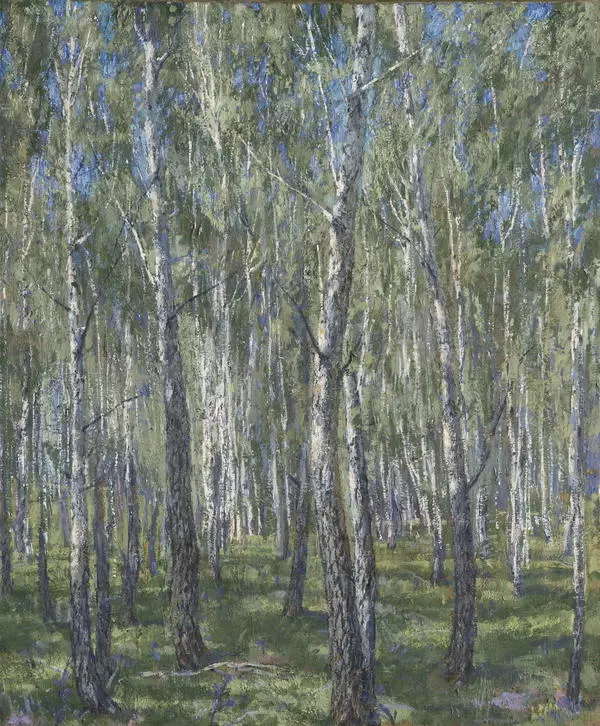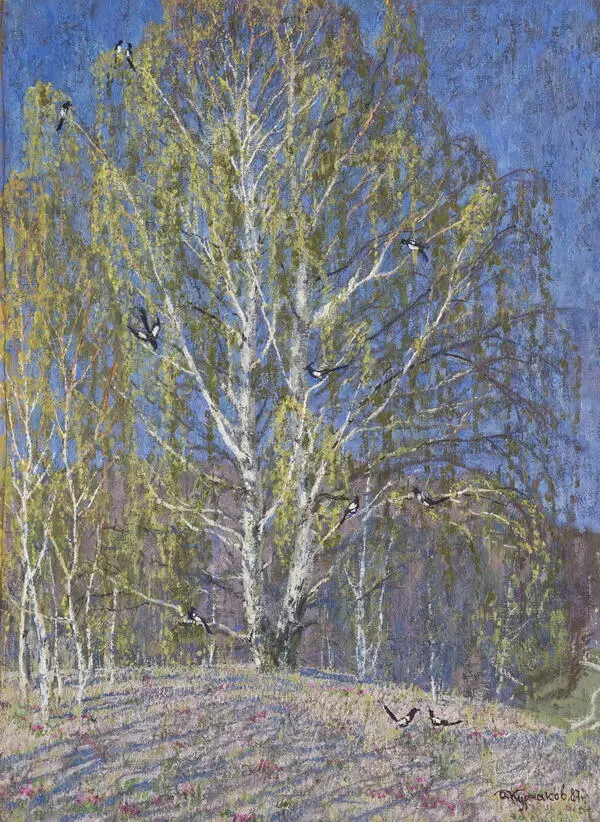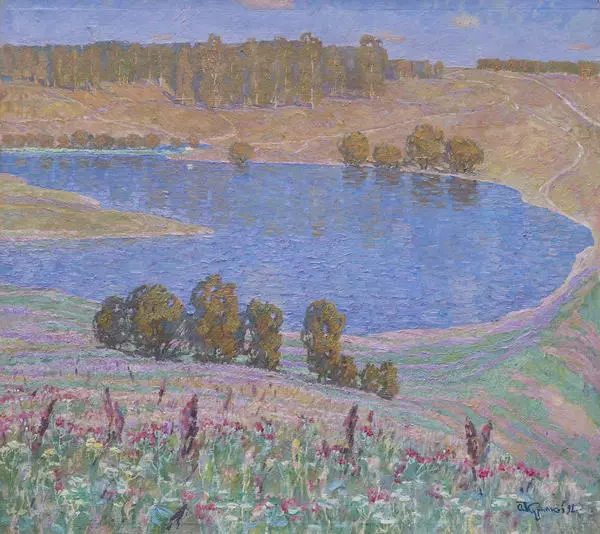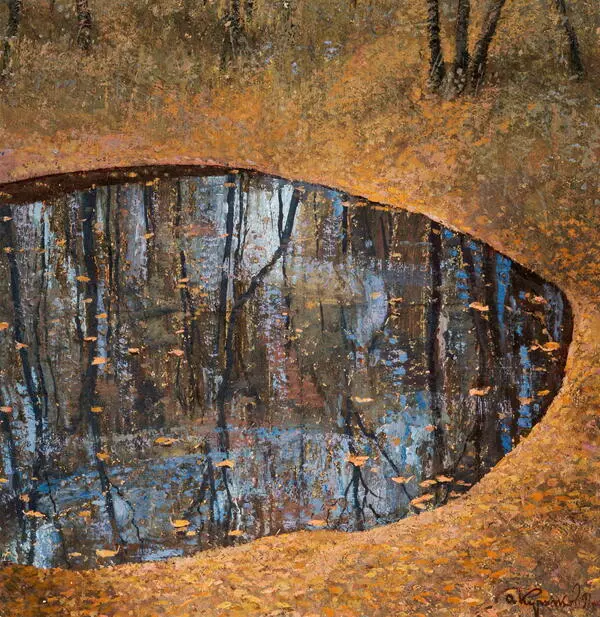Artist Andrey Ilyich Kurnakov is a master of still life. Being an avid mushroom picker, he often painted mushrooms. Andrei Ilyich recalled that once, he with his son and friends went to the Shablykinsky forest for honey mushrooms. ‘Again, I was the one who collected the mushrooms, because I was looking for the stumps on which they grow, the rest were looking for mushrooms - and did not find it’. This time, apparently, he was picking mushrooms somewhere in Znamenka, and, having come to the dacha, settled down to paint a picture at the wall of the house sheathed with wood - grayish-yellow boards are depicted by the artist in the background.
The artist called the work ‘Honey mushrooms’. Maybe because they are picturesquely scattered in the foreground on the left. He collected enough mushrooms, and they are very different. In a gray-blue metal bowl, together with honey mushrooms in the foreground, there are boletus, their red caps and strong legs cannot be confused with anything. To the right of the bowl lie a heap of white milk mushrooms; in a large wicker basket, you can see the milk mushrooms, which are popularly called nigella; you can see the cap of the boletus mushroom; and in the basket on the left with two handles, perhaps, goatsbeards. Long story short, there is something to fry and something to salt. The general coloring of the works is brownish-ocher, sunny. Wicker baskets are depicted so naturally that it seems that they can be taken by the handles and carried away.
But since the author draws our attention to honey mushrooms, let’s take a closer look at them. On a wooden table, reddish from direct sunlight, young mushrooms are scattered: beige round hats, thin grayish straight legs, an airy white skirt under the hat - well, just ballerinas, the artist depicts them so lovingly. The picture shows not just delicious gifts of the forest - it depicts the joy of life.
In front of a metal bowl lies a small knife with a wooden handle, and the wonderful lines from V.A. Soloukhin’s ‘The Third Hunt’ are coming to mind:
’…With one movement of the knife you take off a dozen honey mushrooms at once. A dozen white spots pressed against each other remain about the stump. Another movement of the knife, and a dozen more mushrooms. With your left hand you hold their hats. They remain in the left hand like that, in a bush, without scattering into individual mushrooms. The knife creaks, cutting the dryish, resilient, springy pulp of a dozen mushrooms at once. Looking around, you see more and more stumps, overgrown with mushrooms, it seems that you will never collect all the mushrooms, but in the end, you cut off everything, and they fit into baskets, and the long winter later picks them up to the last mushroom. "
The artist called the work ‘Honey mushrooms’. Maybe because they are picturesquely scattered in the foreground on the left. He collected enough mushrooms, and they are very different. In a gray-blue metal bowl, together with honey mushrooms in the foreground, there are boletus, their red caps and strong legs cannot be confused with anything. To the right of the bowl lie a heap of white milk mushrooms; in a large wicker basket, you can see the milk mushrooms, which are popularly called nigella; you can see the cap of the boletus mushroom; and in the basket on the left with two handles, perhaps, goatsbeards. Long story short, there is something to fry and something to salt. The general coloring of the works is brownish-ocher, sunny. Wicker baskets are depicted so naturally that it seems that they can be taken by the handles and carried away.
But since the author draws our attention to honey mushrooms, let’s take a closer look at them. On a wooden table, reddish from direct sunlight, young mushrooms are scattered: beige round hats, thin grayish straight legs, an airy white skirt under the hat - well, just ballerinas, the artist depicts them so lovingly. The picture shows not just delicious gifts of the forest - it depicts the joy of life.
In front of a metal bowl lies a small knife with a wooden handle, and the wonderful lines from V.A. Soloukhin’s ‘The Third Hunt’ are coming to mind:
’…With one movement of the knife you take off a dozen honey mushrooms at once. A dozen white spots pressed against each other remain about the stump. Another movement of the knife, and a dozen more mushrooms. With your left hand you hold their hats. They remain in the left hand like that, in a bush, without scattering into individual mushrooms. The knife creaks, cutting the dryish, resilient, springy pulp of a dozen mushrooms at once. Looking around, you see more and more stumps, overgrown with mushrooms, it seems that you will never collect all the mushrooms, but in the end, you cut off everything, and they fit into baskets, and the long winter later picks them up to the last mushroom. "


